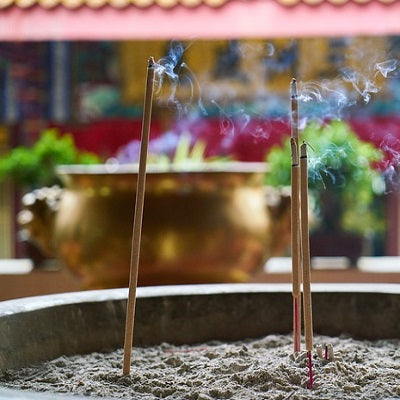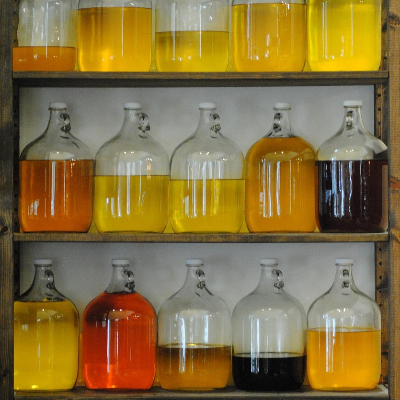Menu
-
-
F.A.Q
- How to identify genuine agarwood chip, natural or cultivated
- How to identify oil injection / absorption fake agarwood beads
- How to know if there are more than one oil in your oil
- How to make your wood bracelet or mala darker
- How to tell if an Agarwood bead sinks WITHOUT sinking it under water?
- How does back flow incense work and how do you burn it?
- Where to start if you don't know what agarwood is ?
- Why are you losing money if you buy seeds and plants?
- Which agarwood incense should I choose?
- Frequently Asked Questions
- Agarwood Related Articles
- Shipping
-
SHOP - Agarwood
-
SHOP - Other Fragrant Wood
-
SHOP - Incense Holder and Burner
-
- FREE Oud Oil guide
- Testimonials
- "Why did you buy this?"
- Contact us
- About Us
- +61430284329
- Login
-
English


CANCER, that is the risk of burning incense. But if I could show you a way to minimise this risk would you be interested in learning more?
June 04, 2020 5 min read
Six years ago, on a Lunar New Year day, my family and I visited a place called Wong Tai SIn temple, Hongkong.
There were a lot of visitors during the day. People prayed for good fortune, and they offered incense to the deities.
Being a famous shine, it meant there would be an enormous amount of smoke inside the temple. But to my surprise, I was dead wrong.
I expected my eyes would shed tears once I entered into the temple. One thing I noticed was there was not much smoke around. I was wondering why?
It was 11 am; there would be many people visited this temple and burning incense before we arrived. But strangely despite people were burning incense, I felt there was little simple around.
Out of curiosity, I decided to find out, so I walked around to observe.
I found that the management organised a team of incense extinguishers whose sole job was to collect burning incense and discarded them within the first 30 seconds from the time the visitor place the incense on the altar.
Why did they do that?
One incense might not create much smoke, but if more than ten thousand visitors per day, it would make a very toxic environment. So by extinguishing the burning incense, they were helping the visitors and the environment. I appreciated their effort of doing so.
Toxic gases
When the naked flame contacted directly with anything, it would burn that thing. When something burnt, it created toxic gases.
Here are just a few examples.
Burning garbage
"Backyard trash burning also produces harmful quantities of dioxins, a group of highly toxic chemicals that settle on crops and in waterways, where they eventually wind up in our food and affect our health" (Waste 360)
Smoking
Tobacco leaf smells excellent at room temperature. Many perfumers made absolute out of it, and the scent is so great.
However, when people smoke, they inhale toxic gases and pollute their surrounding environment.
There are more than 7000 other in chemical smokes, and they cause damage to smokers (Better Health Channel).
Woodsmoke
June to August is winter in Australia. To keep warm, some people burn wood.
When they burn wood, they create smoke from the wood fire. People call it Woodsmoke.
"Woodsmoke contains particles so small that, when inhaled, they can cross the lung lining and end up in the bloodstream. (See fact sheet on particles) Woodsmoke also contains other chemicals that can affect our health. The health problems associated with Woodsmoke include asthma, chronic lung disease, heart problems and premature births and deaths. Some of the toxic chemicals in wood smoke are known to cause cancer" (Department of Agriculture Water and Environment).
Candle
"Professor Jerome Nriagu of the University of Michigan School of Public Health in Ann Arbor had reported that a surprising number of candles he had bought in stores in Ann Arbor and other Michigan municipalities had wick cores made of lead alloys. (Metal cores in the wicks of candles, instead of all-cotton wicks, prolong their burning time.) Nriagu found that after an hour of burning in a closed room, emissions from such candles raised ambient air lead levels to more than thirty times the Environmental Protection Agency's "safe" standard. In light of the neurotoxicity of this heavy metal pollutant, the public health hazard may be significant" (The University of Michigan 1999)
According to the Journal of Hazardous Materials, when you burn a scented candle in a room, it smells good because of the emission of various aromatic substances. Some of these substances containing Polycyclic aromatic hydrocarbons (PAHs) identified as carcinogens (e.g., naphthalene, anthracene, and pyrene)
The number density of ultrafine particles was reported to be up to 241,000 particles/cm3 from the combustion of pure wax candles (Ahn et al. 2015)
BBQ
"Numerous sources have been identified to contribute to indoor air pollution. For instance, the use of charcoals for cooking is found to release various pollutants including metals, VOC, polycyclic aromatic hydrocarbons (PAH), and odorants" (Ahn et al. 2015)
Incense
Some health risks you face when you burn incense –And the below information helps you minimise it
According to The Science of Environment 2015
"A total of 859 compounds were emitted from burning the different Bakhour samples. (a type of incense in the Middle East) The novel finding of this research shows that 42 detected compounds are suspected/known carcinogens, 20 are known to have toxic effects, and at least 200 compounds are known irritants to the eyes, skin, respiratory and digestive tracts, as reported in human and/or animal studies. Our study suggests that inhaled Bakhour smoke contains a substantial number of adverse compounds, which are known to be detrimental to human health. Moreover, the evidence presented shows that incense burning is a significant source of environmental pollution; with the potential of significant health concerns, particularly with long term exposure." (Dalibata 2015)
Should we all stop burning incense?
One moment, I thought we should
But
Before we decide, there is some food for thoughts.
For example, car accidents happen every day. The vehicle kills thousands. So should we stop driving cars?
How about BBQ, the smell of char mushroom? The time of family and friends gathering together? Should we stop grilling?
How about burning candles? There are many associated risks with it, so should we stop burning too?
It is all about how to do it safely.
Drivers should practise driving with instructors to boost their confidence. If they pay more attention to the road, accidents will decrease.
For most of us, we don't barbeque everyday. Some do it weekly. Here is how you BBQ safely and reduce the risk of cancer by grilling smarter
For candles
Ensure candles don't have lead core wicks, which can pose a lead poisoning danger, especially to children
Candles burning time could last between 60 to 80 hours. So to reduce the fire risk, extinguish the candle before going to bed.
Never place lit candles where curtains or blinds can close over them.
Never leave a burning candle unattended. Trim the wick to approximately one-quarter of an inch if the flame is too high or smoking excessively. Burn candles on a protected, heat-resistant surface.
Enjoy them in the excellent ventilation area
So what about incense?
The good news is you still burn your incense, and you can minimise the risk.
It is really simple
Burn it in a good ventilation area: open your window if you are in a room or you can enjoy in an open area.
Burn 2 to 3 incenses a day.
Your nose can feel the aroma of incense in low concentration. It means you should burn one at a time.
The best part is you could share.
You see, when you share a burning incense with someone in the same room or house, it does not decrease the burning time of it.
Let's say the incense would last around 20 minutes, it means
For the enjoyment of one people, the life of it is 20 minutes.
Five people, it is still 20 minutes.
And it does not cost you any extra for sharing.
You don't have to burn much to enjoy it at all. Isn't it less it more?
So share the love and burn no more than three a day and enjoy them in a good ventilation space.
Why and how?
Here is the explanation
Human beings have a sensitive organ for detecting smells. Aroma, or smell, plays a significant role in this sensory perception. Most incense has a low sensory threshold, meaning it can influence the aroma even at low concentrations. However, many people are unaware that high concentrations of aromatic compounds can dull the senses, leading to negative sensory experiences and potential health issues. (Nair 2013)
There you have it how to burn incense safely
Leave a comment
Comments will be approved before showing up.
Also in News

What is Tasbih? The Deep Meaning of Subhan Allah and the Role of Prayer Beads
November 09, 2025 4 min read

